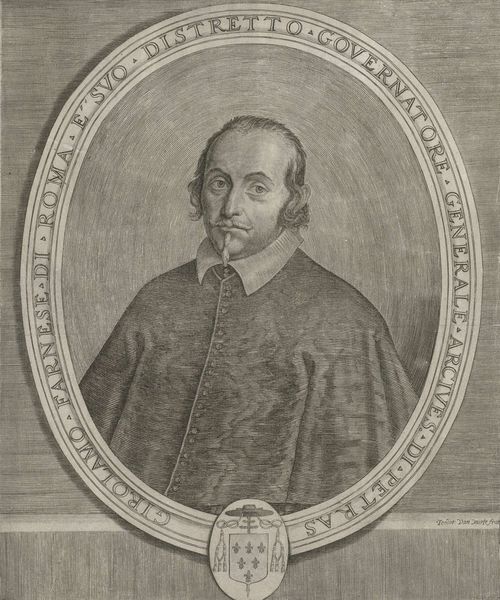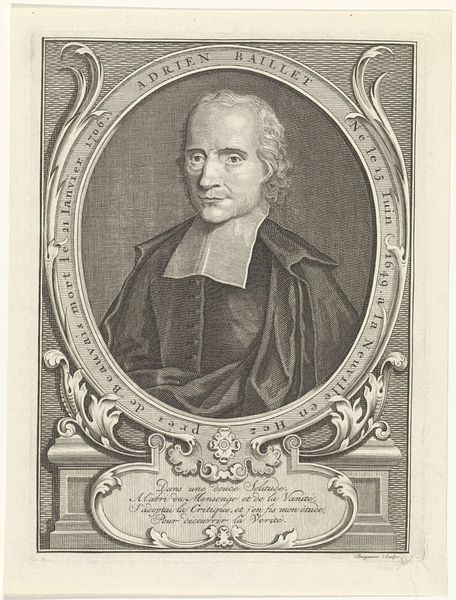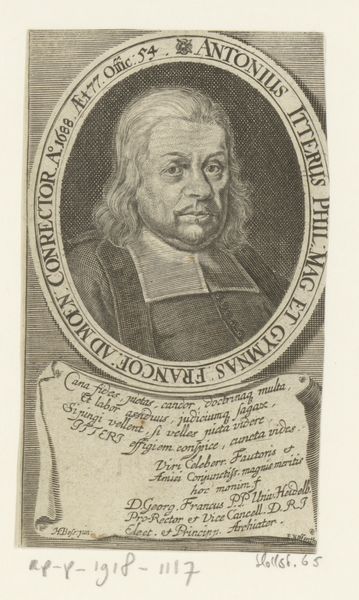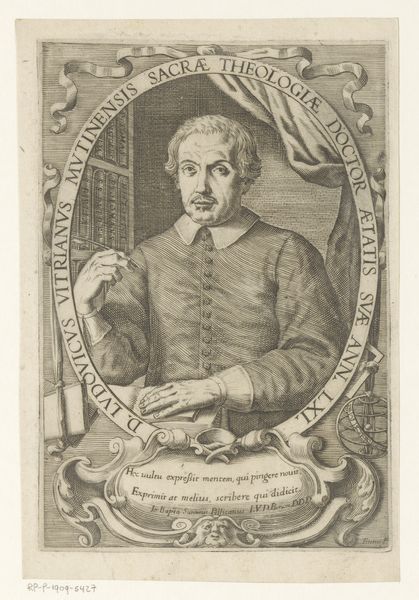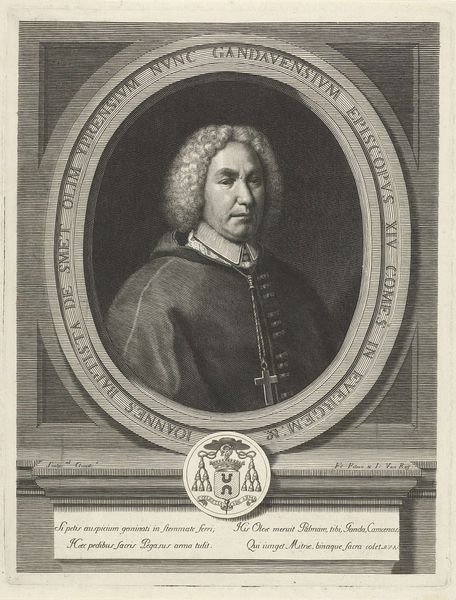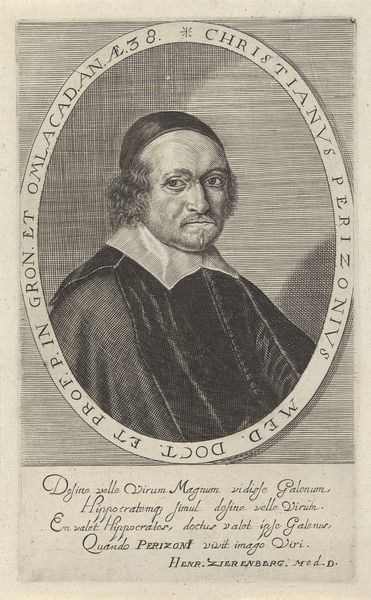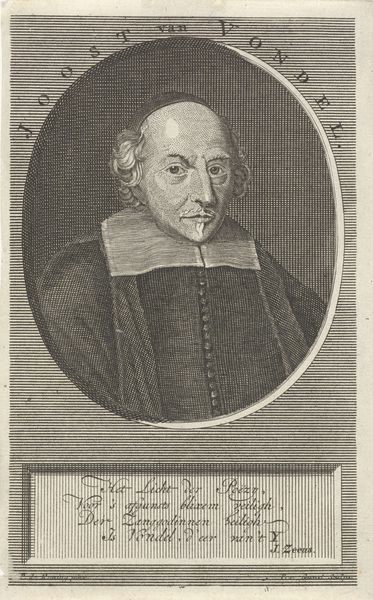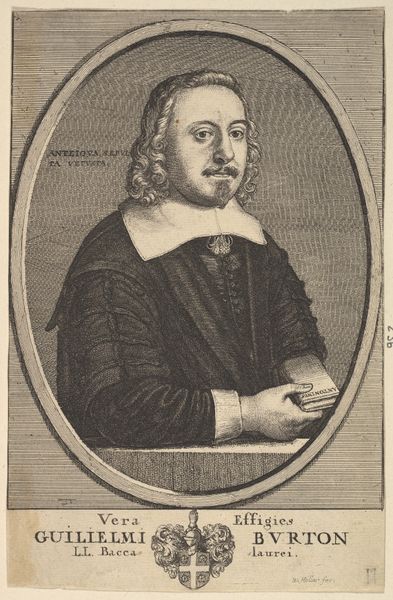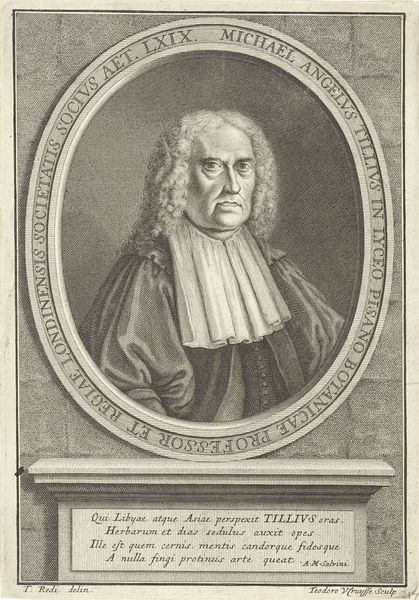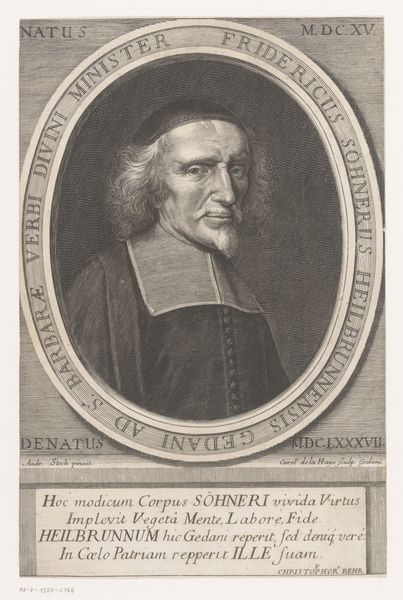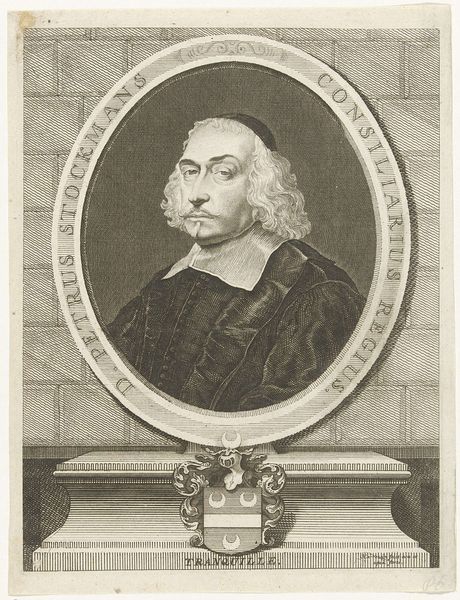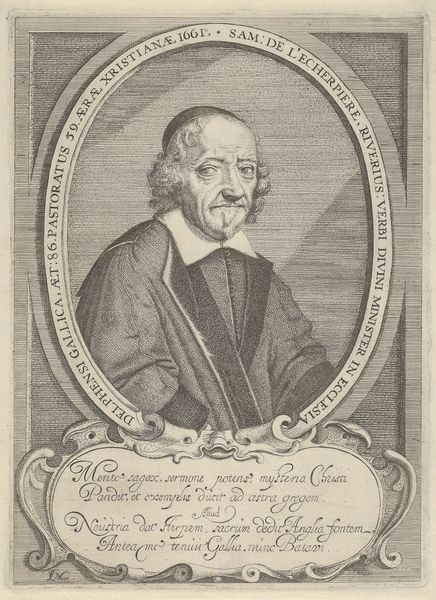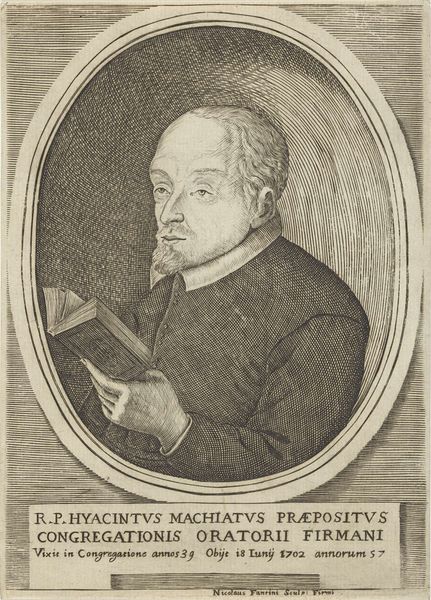
engraving
#
portrait
#
baroque
#
old engraving style
#
portrait reference
#
history-painting
#
engraving
Dimensions: height 286 mm, width 199 mm
Copyright: Rijks Museum: Open Domain
Curator: Looking at this portrait of Franciscus Ridderus, made sometime between 1658 and 1725 by Aernout Naghtegael, what strikes you first? Editor: It has this somber gravity about it. The stark contrast of the engraving gives it an almost austere quality, yet the eyes have a gentle intelligence. What was Ridderus's significance then? Curator: Ridderus was an influential theologian and pastor in Rotterdam. These types of portraits were popular ways of cementing and disseminating an individual's public image, contributing to their lasting legacy. Notice the inscription framing his likeness, listing his titles and dates of birth and death. It adds to his persona. Editor: Yes, the inscription feels integral to the image, acting as a formal announcement, solidifying his place in the historical record. I’m also intrigued by the use of an oval frame, which softens the sternness of the sitter and offers a feeling of humaneness and accessibility, and there is an almost haunting intensity in his gaze. Do we know how the piece circulated? Curator: Engravings like this were often reproduced and distributed widely, making Ridderus’s image accessible to a broad audience and allowing his influence to extend beyond the pulpit. It’s a clear example of art being used to promote and preserve a public figure. The verses underneath are meant to confirm Ridderus' character as the wise shepard who illuminates all. Editor: The poem's presence reveals a concerted effort to not only capture his physical appearance but also to cultivate and immortalize the narrative around his intellectual and spiritual virtues. He represents an important era, seen in terms of social and political thought through a distinct individual. Curator: Indeed, through these combined textual and visual elements, the image of Ridderus serves as a vital record of 17th-century Dutch intellectual and religious life. It is fascinating how a simple portrait becomes a multi-layered carrier of meaning and social messaging. Editor: It reminds me that even seemingly simple portraiture can serve as both a mirror to a specific moment in time and a building block in constructing collective cultural memory. The layering is what makes the study of images from the past an intriguing task.
Comments
No comments
Be the first to comment and join the conversation on the ultimate creative platform.

